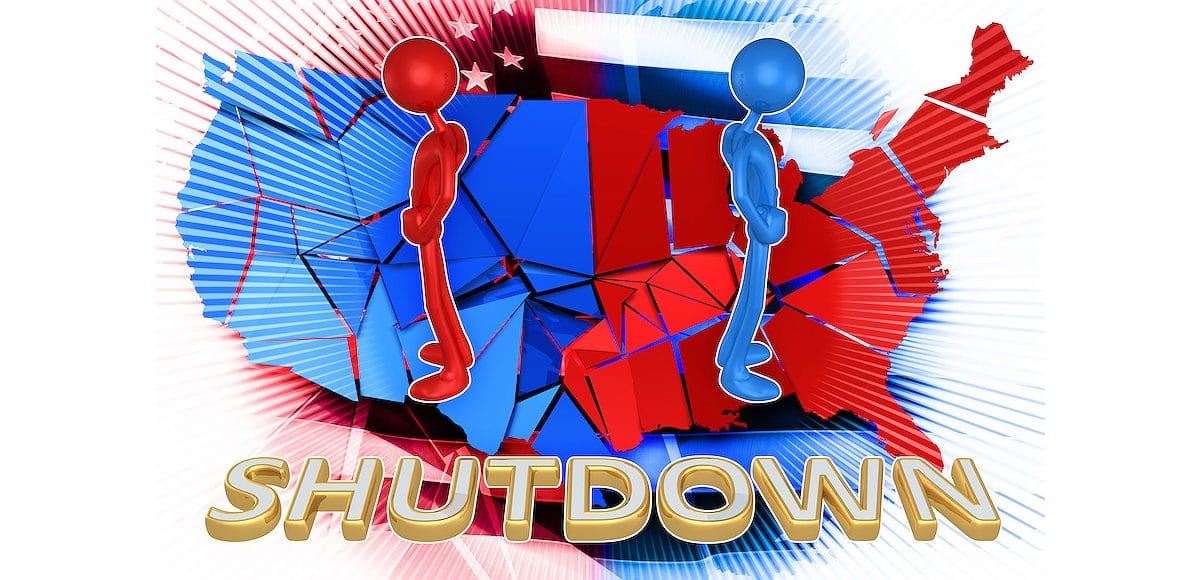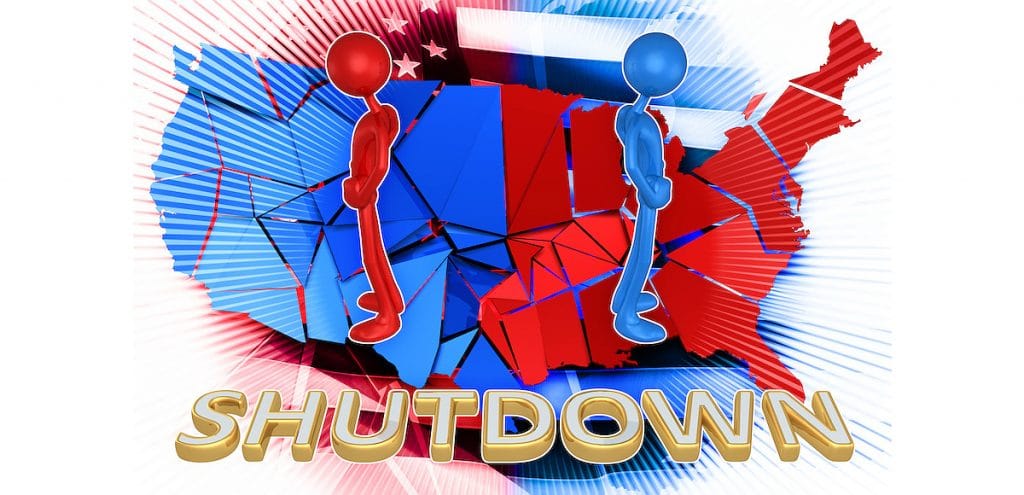
Five Key Metrics Indicate President Trump, Republicans Can Tolerate Shutdown Longer than Democrats

President Donald Trump invited and met with congressional leaders at the White House on Wednesday to discuss negotiations to end the partial government shutdown.
Fearing a progressive revolt before securing the gavel in the U.S. House, Speaker Nancy Pelosi, D-Calif., and Senate Minority Leader Chuck Schumer, D-N.Y., did not come to negotiate in good faith.
Following what was supposed to be a border security briefing, Senator Schumer told reporters outside that Republicans “are starting to feel the heat.”
But a new study finds government shutdowns disproportionately impact Blue States and Democratic constituencies juxtaposed to Red States and Republican constituencies.
| Rank | States Most Impact | Rank | States Least Impact |
|---|---|---|---|
| 1 | District of Columbia | 42 | Ohio |
| 2 | New Mexico | 43 | North Dakota |
| 3 | Maryland | 44 | New Jersey |
| 4 | Hawaii | 45 | Kansas |
| 5 | Alaska | 46 | Wisconsin |
| 6 | Virginia | 47 | Indiana |
| 7 | West Virginia | 48 | Iowa |
| 8 | Mississippi | 49 | Nebraska |
| 9 | Alabama | 50 | New Hampshire |
| 10 | Arizona | 51 | Minnesota |
The result of the study conducted by WalletHub backs up PPD’s editor Rich Baris, who has been making the same case on social media for days.
WalletHub compared 50 states and the District of Columbia (D.C.) across 5 key metrics, ranging from each state’s share of federal jobs to federal contract dollars per capita to the share of families receiving food stamps.
| Overall Rank | State | Total Score | Overall Rank | State | Total Score | |
|---|---|---|---|---|---|---|
| 1 | District of Columbia | 78.59 | 27 | Vermont | 30.46 | |
| 2 | New Mexico | 65.95 | 28 | Texas | 29.59 | |
| 3 | Maryland | 65.70 | 29 | Utah | 29.05 | |
| 4 | Hawaii | 62.91 | 30 | Connecticut | 29.00 | |
| 5 | Alaska | 61.08 | 31 | Colorado | 28.42 | |
| 6 | Virginia | 56.61 | 32 | Nevada | 28.35 | |
| 7 | West Virginia | 46.25 | 33 | Pennsylvania | 27.20 | |
| 8 | Mississippi | 45.56 | 34 | Massachusetts | 27.09 | |
| 9 | Alabama | 43.46 | 35 | New York | 27.08 | |
| 10 | Arizona | 40.73 | 36 | Delaware | 26.98 | |
| 11 | Rhode Island | 37.74 | 37 | California | 26.65 | |
| 12 | Montana | 37.28 | 38 | North Carolina | 26.64 | |
| 13 | Maine | 36.57 | 39 | Arkansas | 25.82 | |
| 14 | Florida | 36.25 | 40 | Michigan | 24.96 | |
| 15 | Oregon | 36.08 | 41 | Illinois | 24.76 | |
| 16 | Oklahoma | 35.87 | 42 | Ohio | 24.66 | |
| 17 | Kentucky | 35.81 | 43 | North Dakota | 23.69 | |
| 18 | Washington | 35.71 | 44 | New Jersey | 19.30 | |
| 19 | Georgia | 35.50 | 45 | Kansas | 18.84 | |
| 20 | Wyoming | 33.01 | 46 | Wisconsin | 17.56 | |
| 21 | South Carolina | 32.88 | 47 | Indiana | 17.02 | |
| 22 | South Dakota | 32.62 | 48 | Iowa | 16.49 | |
| 23 | Tennessee | 32.55 | 49 | Nebraska | 16.40 | |
| 24 | Louisiana | 32.36 | 50 | New Hampshire | 15.59 | |
| 25 | Idaho | 32.20 | 51 | Minnesota | 10.54 | |
| 26 | Missouri | 32.15 |
The partial government shutdown entered its 13th day on Thursday and President Trump has invited congressional leaders back to the White House on Friday to again reopen negotiations.
These findings indicate Speaker Pelosi and Minority Leader Schumer will be feeling more “heat” than the president and Republican leaders on Capitol Hill.
Worth noting, unlike constituencies who rely on SNAP, otherwise known as food stamps, large Republican constituencies who might’ve been impacted are not in this case.
For example, the Department of Veteran Affairs (VA) has been fully funded through Fiscal Year 2019.








Rick / January 3, 2019
I love it. Great article.
/